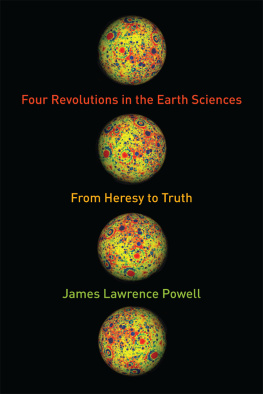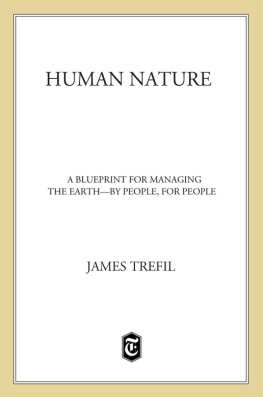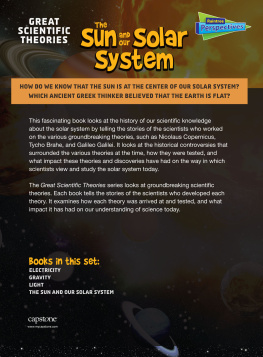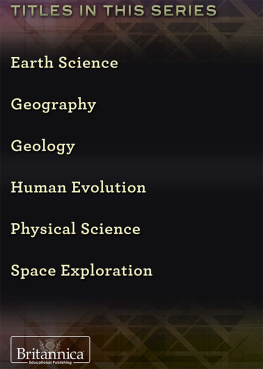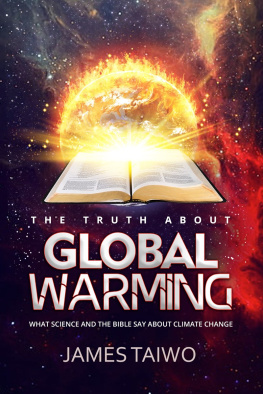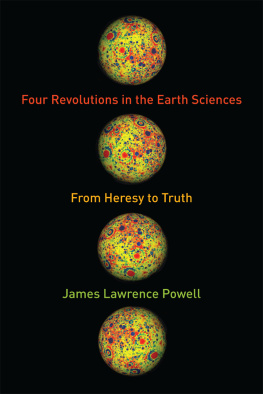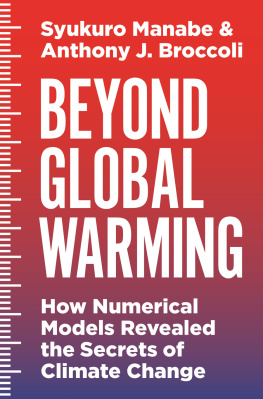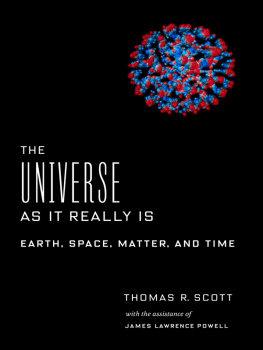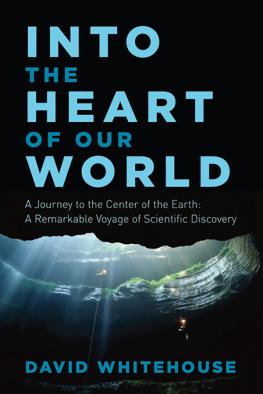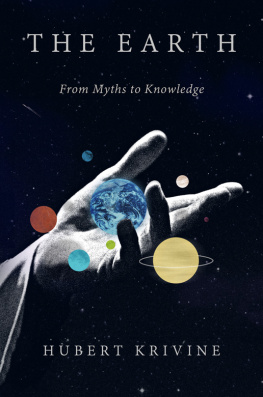Four Revolutions in the Earth Sciences
Four Revolutions in the Earth Sciences
FROM HERESY TO TRUTH
James Lawrence Powell

Columbia University Press
New York
Columbia University Press
Publishers Since 1893
New York Chichester, West Sussex
Copyright 2015 James Lawrence Powell
All rights reserved
Library of Congress Cataloging-in-Publication Data
Powell, James Lawrence, 1936
Four revolutions in the earth sciences : from heresy to truth / James Lawrence Powell.
pages cm
Includes bibliographical references and index.
ISBN 978-0-231-16448-1 (cloth : alk. paper) ISBN 978-0-231-53845-9 (e-book)
1. GeologyHistory. 2. Geological time. 3. Continental drift. 4. Meteoritic hypothesis. 5. Global warming. I. Title.
QE11.P69 2015
550dc23
2014016926
A Columbia University Press E-book.
CUP would be pleased to hear about your reading experience with this e-book at .
COVER IMAGE: Courtesy of NASA/JPL-Caltech/MIT/BSFC
COVER DESIGN: Milenda Nan Ok Lee
References to websites (URLs) were accurate at the time of writing. Neither the author nor Columbia University Press is responsible for URLs that may have expired or changed since the manuscript was prepared.
In memory of my mother, Lizena Davis Powell (19092011)
It is the customary fate of new truths to begin as heresies.
THOMAS HENRY HUXLEY
After a book I had written on global warming came out, my brainsurgeon friend Ed challenged me to explain why I accepted the theory. I gave him the shortest answer I could, which was to say that virtually all publishing scientists accept anthropogenic global warming. He replied, Well, scientists have been wrong before.
Now, Ed is a world-class contrarian, always ready to challenge the prevailing wisdom. He may have been pulling my leg, seeing what reaction he could provoke. Nevertheless, his comeback dismayed me. If someone with his training and intelligence might believe that scientists have simply made a mistake about global warming, then science and humanity are in a deeper hole than I thought.
I could have responded, So have doctors been wrong before. You used to bleed patients, apply leeches, and refuse to wash your hands. Still, I had to admit that he had a point, and it set me to thinking. I knew that it had taken geologists many years to accept that the Earth is billions of years old, that continents drift, and that meteorites crash into the Earth. I had researched the recent scientific evidence for global warming but not its earlier history. I soon found that scientists had also rejected global warming for decades. It seemed to me that explaining how scientists could have been wrong before about four such important theories, and how eventually they came to be right, would make a worthy subject for a new book.
The history of the four discoveries confirms the cardinal virtue of science: it is self-correcting. Scientists pushing the boundaries of knowledge are often wrong, but they do not stay wrong. Though many today prefer to believe that scientists are wrong about global warming, they are not. Instead, global warming has taken its place among the known facts of our planet.
During the twentieth century, scientists made four fundamental and surprising discoveries about the Earth: our planet is billions of years old, continents and ocean floors move, rocks as big as mountains fall from the sky, and humans are changing the climate. When first proposed, each violated long-held beliefs and quickly came to be regarded as scientific, and sometimes religious, heresy. Then, after decades of rejection, scientists reversed themselves and came to accept each theory. Today, scientists regard deep time, continental drift, meteorite impact, and anthropogenic global warming as established truths.
The aim of this book is describe how each idea originated, how it evolved into a full-fledged theory, why it was rejected for so long, and how it eventually came to be confirmed. How can scientists be wrong for decades, yet science winds up being right? Though written for the general reader, I hope that this review will be useful to specialists in the history and philosophy of science.
The four discoveries not only represent major advances in science but also, like findings in astronomy and evolutionary biology, confront us with profound and uncomfortable truths.
We learn that the Earth and the solar system are incomprehensibly older than all of human existence. If geologic time were compressed into a twenty-four-hour clock, Homo sapiens did not arrive until four seconds before midnight.
Although the continents appear to us not to move, they do, ceaselessly. The interactions among the moving plates and the continents they carry account for nearly all of the Earths surface features. Solid as a rock and rock-ribbed define stability, yet over deep time, rock can flow like toothpaste.
Nearly every important fact about our solar system is the result of the chance collision of objects in space. Random impact created our Moon, gave each planet and moon its distinctive characteristics, and, more than 4.4 billion years later, destroyed 70 percent of species while sparing a lucky hamster-sized mammal, one of whose descendants is writing this book.
The discoveries from astronomy and earth science expose the infinitesimal standing of the human race in time and space. They force us to admit that we are the products of, and the potential victims of, random events. Then comes another surprise: merely by going about our business, we have altered the climate of an entire planet and now threaten civilization itself. Not only are we more powerful than we thought; we are dangerous, the most dangerous creatures on Earth.
Where science is concerned, we cannot trust our common sense. Things are not as they seem. That we have been able to make these four counterintuitive discoveries is a triumph of human intellect, a testament to our ability to observe effects and reason back to causes.
Science is like a great medieval cathedral built by generations of dedicated hands and minds. Each new addition rests on the structure below and in turn buttresses those that rise above. In time, parts of the cathedral need to be patched with new mortar. A wall may have to be replaced, a chapel added. But the magnificent structure abides, reaching ever higher.
Gone Right Through It
In September 1846, the faculty of the University of Glasgow convened to examine an applicant for its chair in natural philosophy, the previous holder, appointed in 1803, having passed on after a lengthy illness. At age twenty-two, the candidate, William Thomson (18241907), was easily mistaken for a student himself. In spite of his youth, the Cambridge graduate had already accomplished more than enough to justify his candidacy, but there was one additional hurdle. Before an appointment could become official, the applicant had to write and deliver, in Latin, an essay assigned by the faculty. Thomsons topic was to be De caloris distributione per terrae corpus: The distribution of heat within the Earth. The title echoed that of Joseph Fouriers famous book on heat flow. Either Thomson himself or his father, James, a long-time member of the Glasgow faculty and his sons strongest booster, had proposed the topic. Both knew that no one was better qualified to address the question of the Earths heat than William, who at age sixteen had already mastered Fouriers difficult mathematics.
William Thomson had learned of Fouriers The Analytical Theory of Heat in 1839 from the lectures of Professor John Nichol, who told the teenager that perhaps he could understand this work of transcendent merit. According to Williams later recollection, I took Fourier out of the University Library; and in a fortnight I had mastered itgone right through it.
Next page
